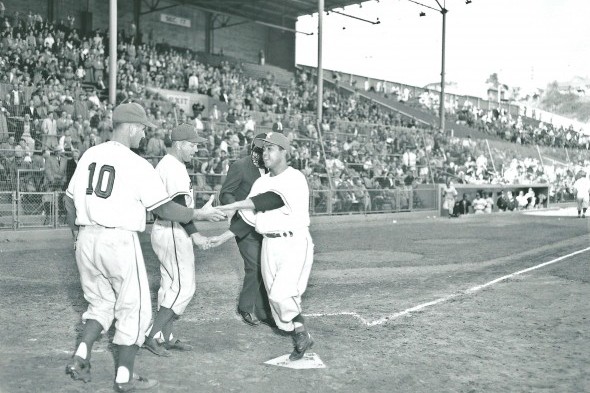
By David Eskenazi and Steve Rudman
The San Pedro, CA., Sportswalk, that citys answer to the Hollywood Walk of Fame, runs along 6th Street from Pacific Avenue to Harbor Boulevard and features numerous plaques saluting famous professional athletes. Most of them Wilt Chamberlain, Tracy Austin, Don Drysdale, Jackie Joyner Kersee, Lisa Leslie, to cite five — have national reputations, but it would probably take a San Pedro native or a Seattleite on Geritol — to recognize Bobby Balcena.
Robert Rudolph Balcena used to be famous — maybe he still is — in San Pedro, at the southern end of the Palos Verdes Peninsula, where he was born Aug. 1, 1925, and died Jan. 4, 1990. He starred athletically at Rolling Hills Prep and, following a lengthy professional career (1948-62), returned to the city, where he labored for many years as a longshoreman.
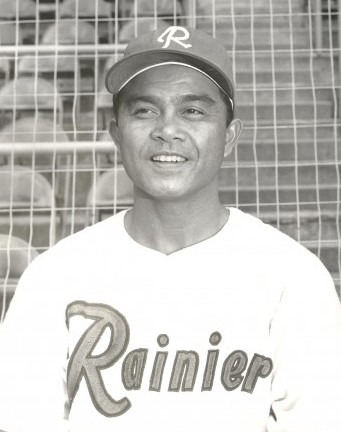
His short biography on the Sportswalk describes Balcena as “One of the greatest athletes in San Pedro history,” citing his skill in football and track as well as baseball.
Baseball became Balcenas main game, in part because he was a superb at it, but also because he was 5-foot-7 and weighed just 160 pounds, eliminating him from football.
Between the time of Balcenas high school graduation and his return to San Pedro, he spent the vast majority of his summers in places such as Mexicali, Toronto, Seattle, Buffalo, Dallas, Vancouver and Honolulu, starring for minor league teams in those towns and endearing himself to fans everywhere he played for his hustle, outgoing nature, infectious smile and work with children.
Balcenas professional baseball career began in 1948 when, as a 22-year-old rookie outfielder with 10-second speed in the 100, he hit a league-high .369 for the Mexicali (Baja California) Aguilas of the Class C Sunset League, an association that included the El Centro Imperials, Las Vegas Wranglers, Reno Silver Sox, Riverside Rubes and Anaheim/San Bernadino Valencias.
After a second season with Mexicali, in which he led the Sunset League with 132 RBIs, and a 154-game stop with the Class A Wichita Indians (1949), Balcena moved up to the AA San Antonio Missions of the Texas League.
That was where the Seattle Rainiers discovered Balcena after he had also put in time for the AAA Toronto Maple Leafs of the International League, like San Antonio, an affiliate of the St. Louis Browns, with whom Balcena went to spring training in 1952 but failed to stick.
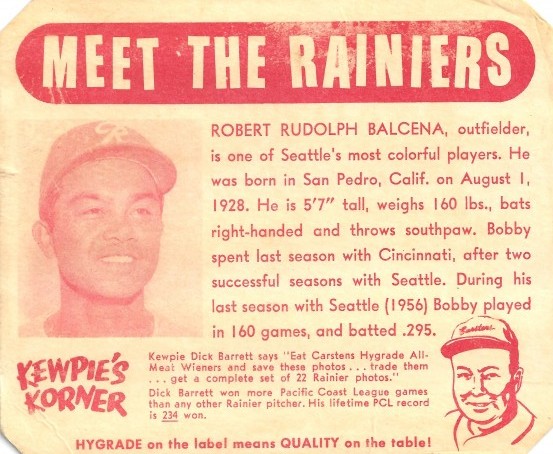
Manager Rogers Hornsby, who managed the Rainiers to the 1951 PCL pennant, didnt believe Balcena was quite ready for the major leagues.
In the winter of 1954-55, after a lackluster season under Jerry Priddy, Rainiers General Manager Dewey Soriano, a one-time Sicks Stadium peanut vendor, set about to reinvigorate the franchise. He persuaded childhood friend Fred Hutchinson to turn down an offer to manage the Baltimore Orioles and return to Seattle and take over a club he had starred for in 1938 before his own major league career commenced.
Virtually from the moment Hutchinson arrived, he and Soriano embarked upon a massive roster purge with the idea of rebuilding it from scratch. Hutchinson and Soriano unloaded five Rainiers players on the San Francisco Seals and three more on the Portland Beavers.
In all, Hutchinson and Soriano unloaded 13 players from the 1954 team with the intent of replacing them with as many former major league players as possible players defined by Hutchinson as those who understand how to give me nine good innings every day.
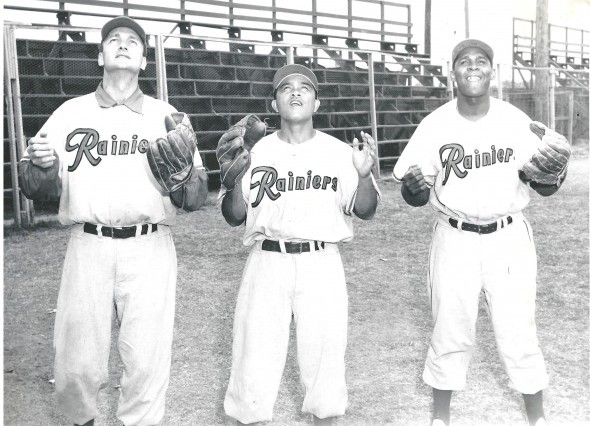
Former MLB notables imported by Hutchinson and Soriano over the course of the season included 1B Bill Glynn (Indians), RHP Lou Kretlow (Orioles), RHP Elmer Singleton (Cubs), RHP Larry Jansen (Giants), RHP Ewell Blackwell (Reds, Yankees, Athletics), RHP Howie Judson (White Sox, Reds), INF Vern Stephens (Browns, Red Sox, White Sox, Orioles) and C Myron Joe Ginsberg (Tigers, Indians).
All made significant contributions to Hutchinsons 1955 team, but none enjoyed the popularity of Balcena, whom the Rainiers purchased from San Antonio because Hutchinson loved his speed, hustle and ability to play the outfield.
The speedy, 5-7 Rainier rookie is the shortest man on the club, wrote Lenny Anderson of The Seattle Times in introducing Balcena to his readers. He is shaded by a half an inch by Vic Lombardi, but has rugged muscular construction through his chest and shoulders which gives him remarkable power. He poled 21 home runs for San Antonio in 1953 and has hit double figures in home run output in four of his seven seasons in organized ball.
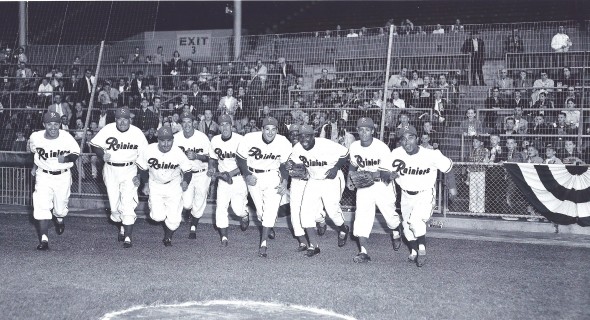
Balcena became an instant favorite of Seattle fans. One day after 3,000 Rainiers supporters jammed Victory Square (between Fourth and Fifth avenues on University Street in downtown Seattle) to rally the team for its upcoming pennant race, the Rainiers tore apart the Sacramento Solons 14-3 in the first game of a season-opening doubleheader witnessed by more than 10,000 at Sicks Stadium. Balcena contributed with a home run and what Anderson described as a remarkable outfield catch.
The 1955 Rainiers had a slow slog to success as documented in Wayback Machine: Hutch & The 1955 Rainiers. After moving into first place April 23, they quickly fell behind the San Diego Padres, who won 24 of 25 games, leaving Seattle almost hopelessly out of the race, 7 ½ games back by the end of May.
The Rainiers got back in it with a nine-game winning streak in June and, by mid-summer, four clubs Rainiers, Padres, Hollywood Stars and Los Angeles Angels were in pennant contention. Seattle ultimately won the flag by three games over San Diego, Balcena delivering a .291 batting average with 156 hits, including seven home runs and 60 RBIs from the leadoff hole.
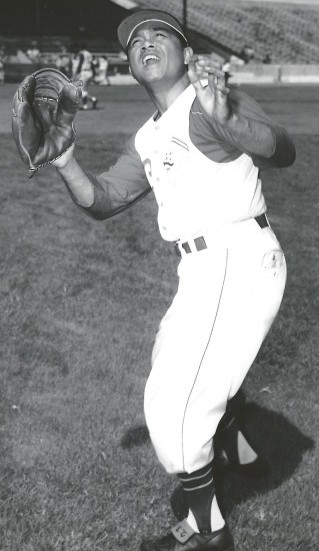
Other Rainiers made substantial contributions new acquisition Lou Kretlow notably went 14-3 in the second half but fans gravitated to Balcena, as Dan Raley explained in his Rainiers history book, Pitchers of Beer.
Balcena was the smallest player on the team, but he was fitter than anyone else, asking the team to install a chin-up bar in the training room, a request that was approved. I was trying to do 25 one day and was dying, batboy Pat Patrick said. Without any effort, he did 100.
Balcena endeared himself to everyone, giving away a glove to a batboy, a bat to a loyal fan. His locker was next to the training room and he greeted everyone who walked past. He was good with kids, who grew attached to him.
After the Rainiers won the pennant, The Times wrote, in a rather overwrought editorial, It must suffice to cite the consistent pitching of Elmer Singleton, the efficacious appearances on the mound of Lou Kretlow, and Bill Kennedys ever-present brilliant help in the time of direst trouble.
“We must also cite the indefatigable performances of ubiquitous Joe Ginsberg and that popular miniature dynamo of almost infallible perpetual motion, Bobby Balcena, who earned a unique place among the most agreeable recollections of the 1955 season retained by legions of the Rainiers enthusiastic followers.
Under managers Luke Sewell and Bill Brenner, the 1956 Rainiers did not repeat their PCL championship after Hutchinson departed to manage the St. Louis Cardinals, but Balcena hit .295 and led the league in fielding percentage (.997), earning a spot on the PCL All-Star team.
On Sept. 14, the Reds, Seattles parent club then managed by Birdie Tebbetts, plucked Balcena and outfielder Art Schult off Seattles roster to assist Cincinnati in its National League pennant chase.
The Rainiers drafted Balcena from San Antonio during the winter of 1954-55 and he became one of the most popular ballplayers Seattle has had in recent years, Anderson wrote in The Times.
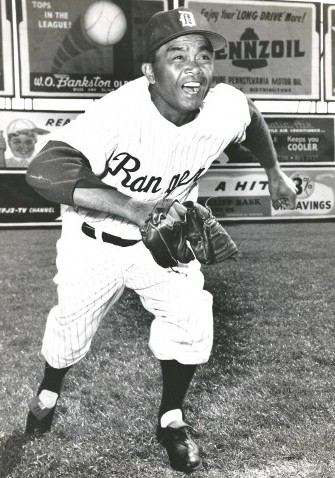
He also happened to be about the best center fielder the team had over that span. He also hit a little; he was hitting .295 when he left. Probably more than anything else, he was a little guy who looked a little bit out of place among the big guys, but who made it because he never let up.
Two days later (Sept. 16), Balcena became the first player of Filipino ancestry to play in the major leagues when he made his debut as a pinch hitter (strikeout swinging) in a 3-2 loss to the Brooklyn Dodgers at Ebbets Field.
Balcena didnt receive many opportunities to contribute, appearing in only seven games. He did not get a hit in two at-bats, but scored two runs as a pinch runner.
Balcena stayed with the Reds, who didnt win the pennant, through spring training the next year, then was returned to Seattle March 23, 1957. Balcena never saw the major leagues again.
“I wasn’t up there long. But I was there,” Balcena liked to tell reporters after he retired.
In 1957, under new manager Connie Ryan, Balcena hit .286 in 130 games and led the PCL in doubles with 40, but mysteriously lost his ability to hit in 1958. On Aug. 7, Soriano optioned Balcena to the Buffalo Bisons of the International League.
He (Balcena) has had a disappointing season, hitting only .160, The Seattle Post-Intelligencer declared. Balcenas exit from the Rainiers takes place under far different circumstances from those that prevailed when he first left here, near the end of the 1956 season. At that time, Bobby was headed for what proved to be a trial with Cincinnati, riding his second consecutive season of success and popularity in Seattle.
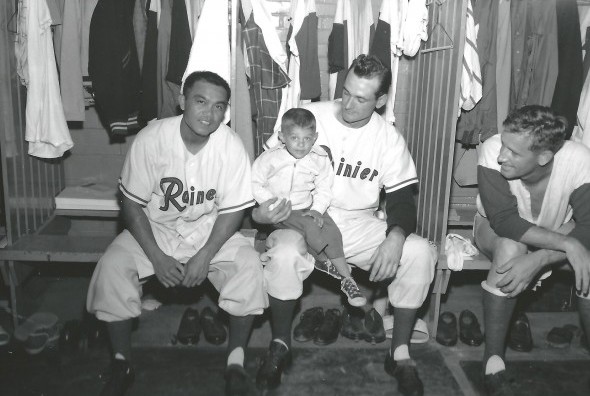
He was not only brilliant in the outfield, but he delivered at the plate when it counted. Those two assets, coupled with his hustling decorum on the field and the natural affection the fan feels for the small man in a big mans game, made Balcena one of the most popular Seattle players in recent years.
This year, something happened to the old Balcena magic, and it happened in the neighborhood of the plate. Though he probably was as fleet and sure and nimble as ever in the outfield, his batting average fell to .160 and his production of home runs dwindled to one in 180 at bats.
In addition to his batting troubles, Bobby has suffered this season with injuries. Another factor tending to throw him into the expendable category was that Seattle has an ample supply of outfielders and an acute shortage of first-base talent.
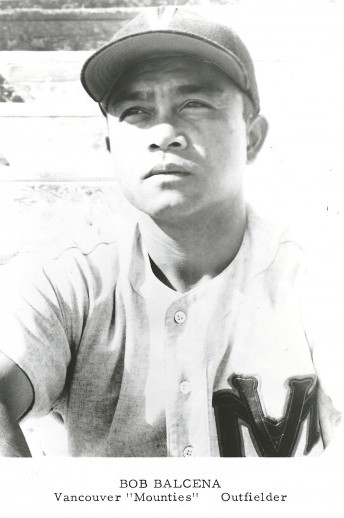
The transfer of Balcena to Buffalo made possible the Rainiers acquisition of a left-handed first baseman, Jim McManus. Leaving, Balcena carries with him the hopes of all Seattle fans that in Buffalo he will retain his old talent for laying mace to the onion.
Balcenas move east worked. In his first 19 games with the Bisons, he pounded International League pitching for a .426 average. During a seven-game Buffalo winning streak, he went 15-for-25.
Balcena rejoined the Rainiers in 1959, but after he failed to do much in spring training, the Rainiers sold him to the Dallas Rangers March 20.
No more popular baseball player has suited up for the Rainiers in the past decade, Times columnist Georg N. Myers wrote after the sale. For most of four seasons, 1955-58, Balcena was an economy-sized, compact outfielder at Sicks Stadium. Baseball perfectionists may have found Bobby — at 5-foot-6, 155 pounds — wanting in some of the finer points of the game.
His tiny stature may have made him look faster than he was. The heaviest bat he swung for the Rainiers was a .295 average, with 14 home runs.
But Bobby was childhoods idol. The small fry saw in him a little of themselves, the wee ones bucking the grown-up world and doing fine.
Balcena played a year in Dallas, then a couple of years with the Vancouver Mounties of the PCL, and two more with the Hawaii Islanders, also of the PCL.
Once, when the Rainiers traveled to Honolulu for a series, a reporter said to Balcena, Many a ballplayer dreams of making a living at the game and, at the same time, vacationing in Hawaii.
I felt the same way, replied Balcena. But when Im in Honolulu I find myself wishing I was back in Seattle.
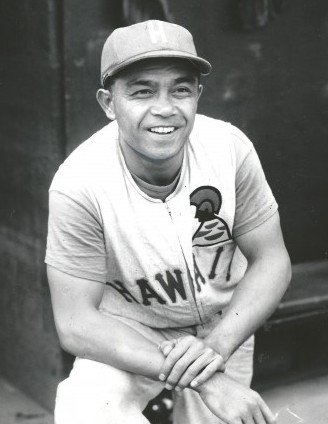
Balcena returned to Seattle nearly every winter after the Rainiers sold him to the Dallas Rangers, usually renting a cottage at Lake Sammamish.
He made a living primarily as a longshoreman, and also taught calisthenics at Sacred Heart School in Bellevue and at St. Louise School in Lake Hills. In 1964, San Pedro beckoned and Balcena returned home for good, a hero in the local Filipino community and famous in the Philippines for having reached the major leagues, if only briefly.
After his return to San Pedro, a group of San Pedro fishermen and longshoremen organized a “Bobby Balcena Night” at old Wrigley Field, home of the Pacific Coast League’s Los Angeles Angels.
“The stands that night at Wrigley Field were jammed with half the people of San Pedro, who turned out to pay respects to our hero,” retired fishing boat skipper Norm Mezin told The Los Angeles Times.
“Bobby was one of San Pedro’s all-time sports greats,” added Times artist Pete Bentovoja, a lifelong friend of Balcenas. “As little as he was, he was one hell of a football player in high school, as well a super baseball player. If he had only been a little bigger, he would have been one of the immortals.”
On Jan. 4, 1990, Bobby Balcena sat in his favorite chair in front of his television set at his San Pedro home and quietly died of natural cases at age 64. It was two days before anyone discovered his body.
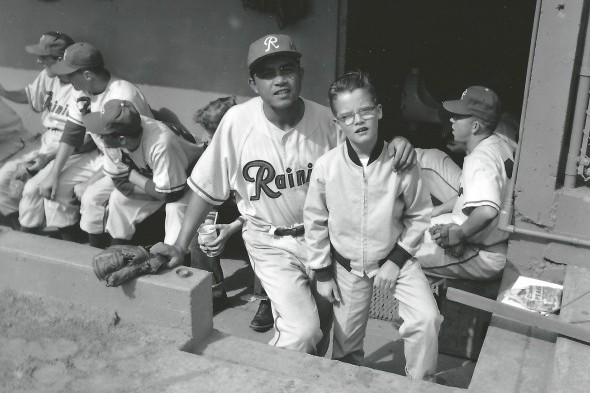
—————————————–
Many of the historic images published on Sportspress Northwest are provided by resident Northwest sports history aficionado David Eskenazi. Check out Davids Wayback Machine Archive. David can be reached at (206) 441-1900, or at seattlesportshistory@gmail.com

10 Comments
Great piece as always, fellas. Balcena was arguably the most popular baseball player in Seattle during the 1950’s, along with Artie Wilson and maybe (for a year) Jim Rivera or Vada Pinson.
I had to wonder, though: What must the logo for the Riverside Rubes have looked like? A hayseed with stitching?
Great piece as always, fellas. Balcena was arguably the most popular baseball player in Seattle during the 1950’s, along with Artie Wilson and maybe (for a year) Jim Rivera or Vada Pinson.
I had to wonder, though: What must the logo for the Riverside Rubes have looked like? A hayseed with stitching?
My address is still PO Box 884, Bayview, ID 83803 if you ever decide to send the book you promised me. Bayview Herb
My address is still PO Box 884, Bayview, ID 83803 if you ever decide to send the book you promised me. Bayview Herb
Any idea what number Balcena wore during his time with the Rainiers? I know he wore 24 with the Reds.
Any idea what number Balcena wore during his time with the Rainiers? I know he wore 24 with the Reds.
Balcena wore #12 with the Rainiers. Thanks for reading!
Thanks! And thanks for writing this. Bobby was my grandmother’s first cousin.
Balcena wore #12 with the Rainiers. Thanks for reading!
Thanks! And thanks for writing this. Bobby was my grandmother’s first cousin.